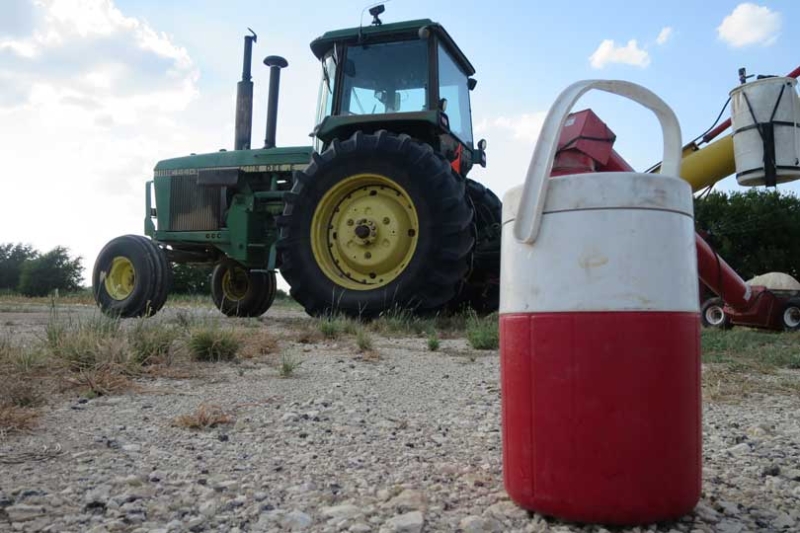By Emmy Powell
Communication Specialist
Summer in Texas brings triple-digit temperatures and high humidity levels.
That brutal combination can be devastating, even deadly, to farmers, ranchers and farm workers.
Amanda Wickman, program director at the Southwest Center for Agricultural Health Injury Prevention and Education (SW Ag Center), recommends taking precautions while working in the sun.
“Temperatures are rising. In Texas, we also have very high humidity,” she said. “So, the temperature that you see on your phone or on the news is really not even the temperature that you are feeling outside.”
Being heat safe
But farmers and ranchers can take precautions and reduce the potential for heat-related injuries.
Wickman noted it’s recommended for those who work outside to drink eight ounces of water every 15-20 minutes to keep your body properly hydrated.
Another way to track hydration, she said, is by monitoring urine color.
“Everyone can keep an eye on their hydration, and the darker your urine, the more dehydrated you are,” Wickman said. “This is something that farm workers and people who work outside can kind of keep an eye on to monitor whether or not they’ve been taking in enough water.”
She also recommends trying to avoid drinking excess caffeine, alcohol and energy drinks.
Some symptoms may be easier to notice on your own like heat cramps, rash, a headache or feeling dizzy. But Wickman said there are additional symptoms that can be noticed by others. Those include Confusion, a flushed or red face or a slower work pace.
Individuals with a preexisting condition are at an increased risk of heat illness and should be aware.
“Whether you have high blood pressure or if you are pregnant, those are going to going to put you at higher risk of suffering from a severe heat illness,” she said.
It is beneficial to post information and resources as reminders around the farm or ranch, Wickman added.
“Using posters and visuals on the farm serves as a reminder for everyone,” she said.
Skin safety
Another concern with working long hours in the sun is the risk of skin cancer.
“Heat illness and sun safety go hand in hand,” she said. “Farmers and outdoor workers have a much higher rate of skin cancer than other workers simply due to exposure.”
Applying sunscreen and wearing hats can help protect skin from sun damage.
“Agricultural workers and owner/operators, farmers, ranchers do not typically put on sunscreen every morning,” Wickman said. “We do know a lot of people wear hats, but it’s important to wear a wide brimmed hat because the baseball caps won’t protect your ears or the back of your neck.”
Tips to prevent heat-related illness, death
- Take water breaks every 15 minutes,
- rest in the shade or air conditioning to cool down,
- wear a hat and light-colored clothing,
- know heat-illness signs and symptoms,
- report symptoms early and watch out for coworkers,
- know what to do in an emergency
- and gradually build up their heat tolerance using an acclimatization process.
Symptoms of heat illness
- heavy sweating,
- muscle cramps,
- weakness,
- dizziness,
- nausea,
- weak but rapid pulse
- and headaches.
Heat safety resources
SW Ag Center has several resources available to help prevent heat illness and heat stress.
RISE Virtual Leaning Courses are free and cover heat illness training for farmworkers and farm owners, as well as shop safety, livestock handling safety and ag wellness.
SW Ag Center, in collaboration with the Ag Safety and Health Alliance, created an educational motion graphic covering heat related illness. It is also available in Spanish.
For more information and tips on heat stress related illness, visit the CDC heat stress page.


Leave A Comment